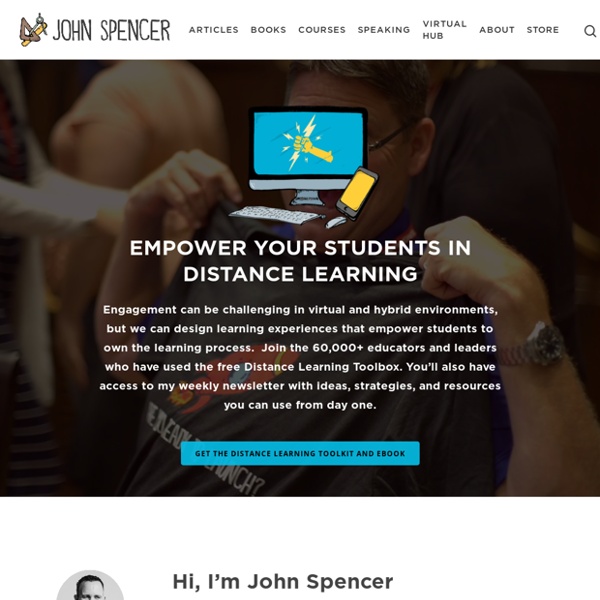



What Can Video Games Teach Us About Instructional Design? When I was a kid, I used to spend hours playing Tetris. I would zone out everything else and hit a state of hyperfocus. I was fully engaged. Montessori Letter Sounds - Phonics in English, Spanish, French, German & Italian on the App Store Currently featured in Apple's "Everything changes with iPad" campaign showing how much learning has changed with this very powerful tool! Montessori Letter Sounds is a multi award-winning app to get your children on the road to reading! It works in 4 easy steps:- From the age of 3: “I spy” to play sound games.- Around 4 years old: “Letter sounds” to memorize the letter sounds and shape.- Between 4 and 5: “Mix and match” to bring together the two first steps.- Around 4 1/2 years old: “Sound it out” to write their first words using a moveable alphabet. All four steps are included in this version but two games are locked at first and get unlocked as the children play and win marbles.
Foundational Texts — Teaching While White Clark, Christine and James O’Donnell, Eds. (1999). Becoming and Unbecoming White: Owning and Disowning a Racial Identity. Bergin and Garvey.Delgado, Richard & Jean Stefanic. (1997). Critical White Studies: Looking Behind the Mirror. Why You Need a Learning Journey Map What do instructional designers, training managers/directors, and CLOs all have in common? These roles all (should) care intensely about creating learning solutions that deliver operational results for a business. Do you want the learning solutions you build or buy to deliver meaningful business results? If so, you’ll need to look outside the traditional box that “training” sits inside.
ML Learning More than 30 years ago, Media Lab founding faculty member Seymour Papert laid the foundation for a new theory of learning through construction. He created tools for children to be designers and creators, rather than just consumers of technology, positing that learning happens best when people are actively constructing knowledge through creative experimentation and the design of sharable objects. Today, the ML Learning Initiative is built on similar principles of creative learning and aims to bring the collective creativity of the Media Lab to bear on the future of learning. The ML Learning Initiative is built around a cohort of Learning Fellows from across the diverse Media Lab groups. In addition to supporting this community, the ML Learning core team is passionate about developing public education programs that open up Media Lab research and expertise to the world.
How to Set Up an Online Elementary School Newspaper Like teachers around the country, I enjoy setting up those special events and activities that make kids want to come to school, and I’ve found that it’s hard to run clubs, conduct sports tournaments, and host talent shows out of my den–turned–virtual classroom. It hasn’t been easy telling the students over Zoom that many of these won’t happen. But how could I tell my amazing fifth-grade journalists that the Dolphin Splash Newspaper Club had to take a break too? Fortunately, I discovered that I could keep my school newspaper running safely and easily, and the results have been awesome.
How to Take a Learning Experience From Miserable to Memorable Imagine you own a travel business. You decide to specialize in trips to Europe. It’s up to you to define the itinerary and make all decisions regarding what a group will do. Now imagine two groups of travelers and two trip purposes. One trip is for educational purposes. This trip is targeted toward low-income youth ages 16-18 who have never even flown on a plane before.
Empowering Students Through Multimedia Storytelling Perceptions of people and events are very much dependent upon who you are and what your experience has been. Events in Ferguson and Baltimore, among others, highlight our misunderstandings of each other, and how the same facts can be interpreted entirely differently. What's worse, people of color and underrepresented groups are defined by journalists covering these events, who themselves don't reflect the ethnic composition of our country as a whole. Recent studies have proven that stories can change perceptions and even make people more tolerant.
How to Design Great Learning Experiences Instead of Just Delivering Content Let’s pretend you’re going on vacation with a friend we’ll call Suzy. You tell Suzy you love vacation planning and you’ll take care of everything. Suzy is a busy woman and says “Great!”. You agree on the week to go, a climate, and a budget, and you immerse yourself in planning. You know Suzy enjoys being active, how much she’s is willing to spend, and that you both want to go somewhere hot.
How to Build Resilience in Kids It’s not easy to see your child have a setback, especially after your child has worked really hard. But facing challenges and learning from them can have an upside. It can help your child build resilience. Resilience is a life skill that can be taught. Concreteness Fading: A Method To Achieve Transfer — The Learning Scientists By Carolina Kuepper-Tetzel “What is one of the most difficult things to teach your students?” When you ask teachers in different sectors, one answer that will probably get a lot of hits and lead to agreeing nods is “Transfer!” The ability to apply learned principles and knowledge to solve novel problems or tackle new, unfamiliar tasks. Indeed, it turns out that transfer is extremely hard to achieve. The issue with transfer is that it requires students to reason on an abstract level.
Design Thinking: Level-Up the Learner Experience Two years ago I was at a CLO conference in Austin, Texas. The keynote speaker asked a question that gave me pause then – and continues to drive me now. He asked, “Is the 45-minute course you created a good use of 45 minutes of the learner’s life? Because those are 45 minutes of time that individual does not get back.”